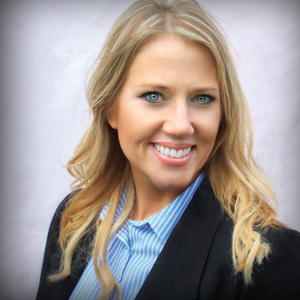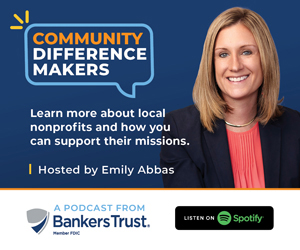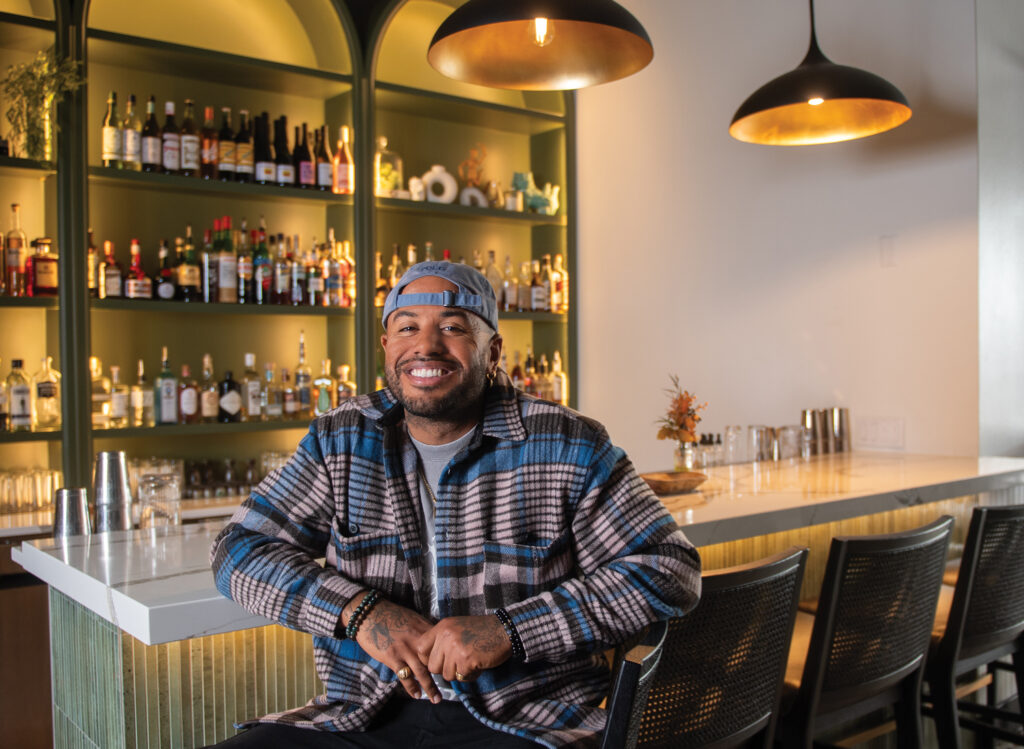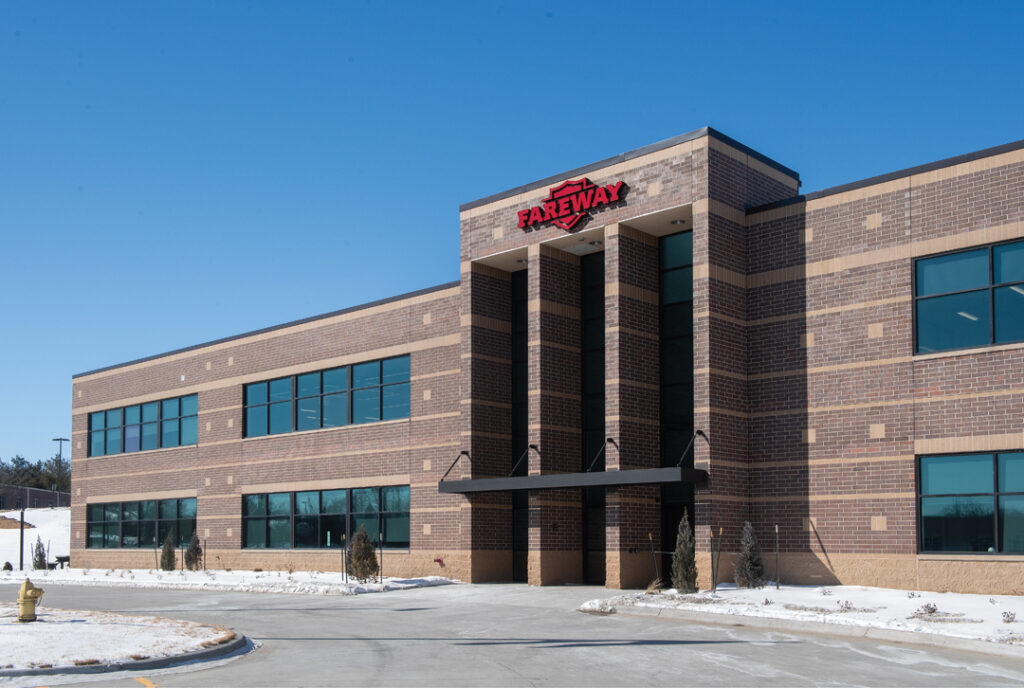A Closer Look: Beth Shelton
CEO, Girl Scouts of Greater Iowa

People are important to Beth Shelton. Her bio has several cues to that: She started college studying religion and philosophy and thinking about a career in the ministry. She’s worked in a variety of roles that depended on her people skills — coaching, sales and recruiting, fundraising, advocacy, and working with youth wellness for the American Heart Association. People are important to Shelton, but so is success. From the time she stepped up to the plate in her first T-ball game, she’s had a fierce determination to be the best. And Shelton excelled both academically and in a variety of sports, which is all the more impressive given that she was born without a right hand. That combination of determination and compassion undoubtedly impressed the board of directors for the Girl Scouts of Greater Iowa, which last year was interviewing candidates to replace retiring CEO Jamie Boersma. Those values also have steered Shelton’s first few months in the job. She’s got her work cut out for her. The number of girls participating in Scouting has been declining for years, even as the organization seeks to refocus its programming to add more science, technology, engineering and math programming and to address issues with girls that can hold them back from leadership as women.
So were you a Girl Scout when you were young?
I wasn’t. I grew up in a single-parent family, and we were stretched pretty thin. … I was pretty heavily involved in sports, from a very young age. I think, having an older brother, I sort of followed in his footsteps. Looking back, it’s a resource and a group that I could have really benefited from and I wish I’d been a Girl Scout, now that I see all the amazing things they do for young women.
What attracted you to this position?
The opportunity to lead an organization that is on the cusp and really ready for dynamic changes was exciting. I also have two daughters myself, and they’re 10 and 7 so it’s really easy for me to have a heart and passion for any programs that are advancing girls and women.
Tell me about the challenges and opportunities you see for the organization right now.
Essentially, my whole first month was spent just listening to people. I met with every single employee, one-on-one, every board member, one-on-one, and many volunteers and troops. What I really wanted to do was listen to the people who know best what’s working well, where we still needed some improvement, where people saw the organization going, so I could get a real feel for the pulse of the organization. And then I decided to spend the next 30 days taking action on the things we talked about. For me, that meant addressing our emotions and culture as an organization.
So what did you find out, and what direction did you endeavor to take?
Whenever there’s a change in leadership, it can make people feel really uneasy, so I wanted to take some time to really develop relationships with, really not just the staff, but the members and volunteers. And you really can only do that by investing time and energy into that emotional bank account, if you will. I drove lots and lots of miles because we cover about 40,000 square miles, reaching out to volunteers around the state. … And then I took that feedback and pretty quickly started making some changes in our organization. In April, we rolled out a new employee handbook. It included some new benefits, new policies — things that I heard from the staff. For instance, a paid maternity leave policy, so we implemented in April eight weeks of paid maternity leave for full-time employees. We incorporated a paid day for volunteering. We re-evaluated our paid-time-off policies and increased those benefits for employees. We went to casual attire — that was really a big cultural change for us.
What’s next?
One of our challenges is our huge geographic region, so finding ways to actually physically get in front of Girl Scout volunteers. We know that being essentially in a human-services kind of organization, fostering relationships has to be at the heart of what we do. … I think we have a lot of continued work to do in that area.
Tell me about where you think Girl Scouts is heading right now.
I think we’re still very much in kind of a transitional role in our evolution. Girl Scouts has been around for 104 years, so there are lots of traditions that are important and that we want to hold on to. … One of the challenges is moving 14,000 members, plus the alumnae base, in the same direction at the same time. We have people who have been members for 60 years. There are strong emotional ties and strong feelings about changes that we make. Another challenge is that there’s much more competition for girls’ time today. I can attest to that with my own two daughters. There are more extracurriculars, and the extracurriculars that are available typically require more time commitment. And one of our biggest challenges remains finding more volunteers.
What kind of challenges are young women facing today that Girl Scouts can address?
We know statistically that there’s still a wage gap, and when we think about empowering women and girls, that’s a topic that we have to think about and talk about. Part of that is empowering girls and giving them the skills and abilities and a voice, so they can come to the table with a strong voice about what they deserve to be paid. And some of that is the way that we teach girls about being assertive. For instance, in a salary negotiation, there is evidence that girls and women are not as assertive in those conversations as men are. So that would be something we can directly address in our Girl Scout programming. One of our core values is teaching girls to be confident. That is a great practical example of how confidence can change their life, starting at the age of 22 with their first job interview. It could really set the stage for them.
What are some of the other core values?
Courage and character. Another great example regarding character would be things like cyberbullying, so that’s something that is prevalent for girls and kids today and so really teaching kids ways to exhibit character in that arena.
Anything new things you’re particularly excited about incorporating in Girl Scouts?
When girls have great outdoor experiences — camp experiences, for instance — we absolutely know statistically that that changes their lives and cements that courage piece. That is something that can carry them through a lot of difficulties in life. … We know that our camp attendance is up year over year. We just invested in a new high ropes course at Camp Tanglefoot, which is incredible. And girls, the first time they come to camp, they look at that or they start to go up the ladder, and they’re in tears or they’re trembling and they can’t do it. A few hours or a few days or a few weeks later, they’re completing a course and they’re grinning from ear to ear and saying, “I can’t wait to do it again.”
What would be your definition of success for Girls Scouts here in Iowa?
Success for me in the next year would look like: growth in membership, for sure. And seeing and feeling some of those results of a cultural transformation in the organization.











